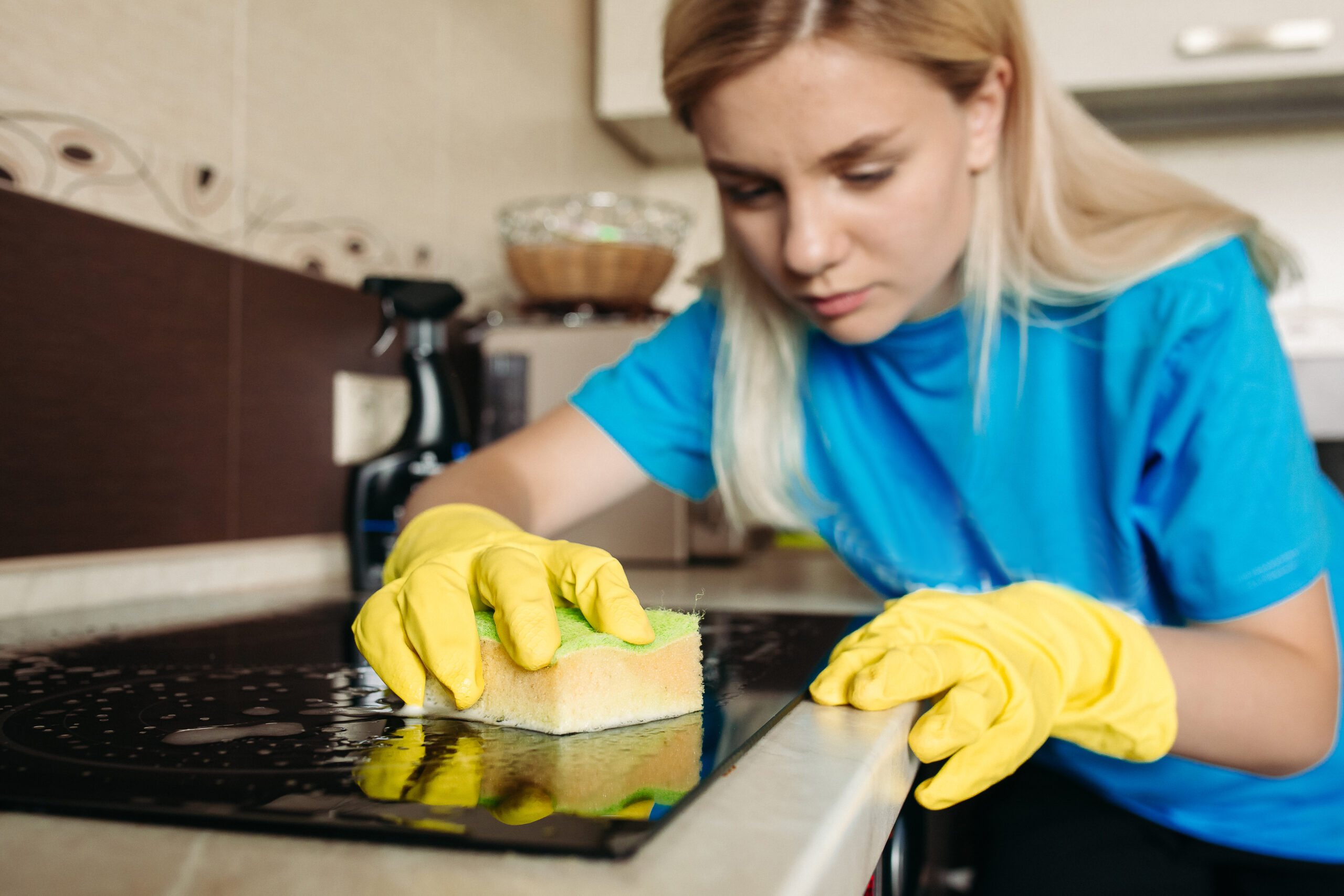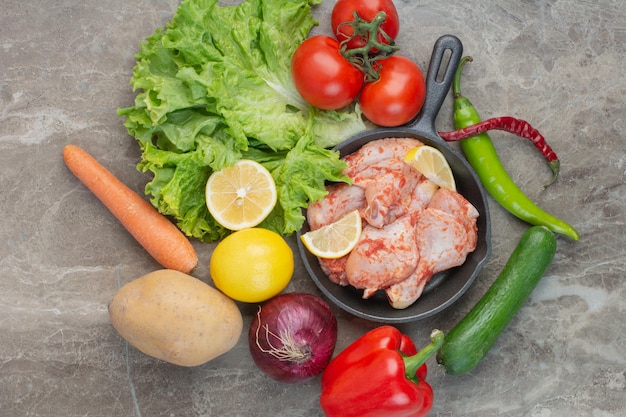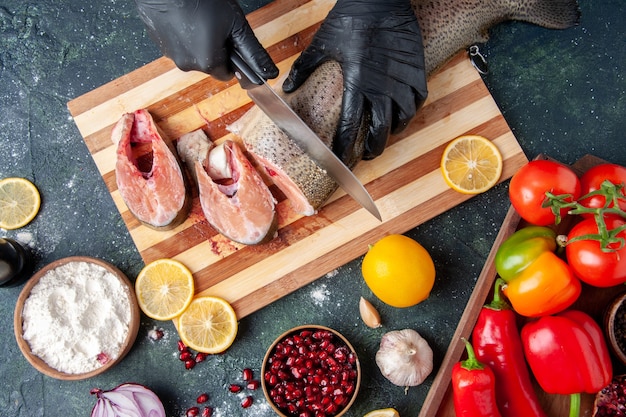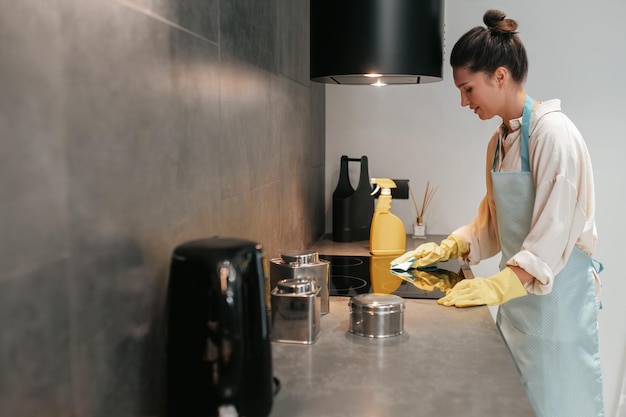Types of Kitchen Hygiene that You Sould Know About

Kitchen hygiene is an essential aspect of both professional and home cooking environments. It encompasses a range of practices that ensure the cleanliness, safety, and overall health of the kitchen space and the food being prepared. Proper kitchen hygiene reduces the risk of foodborne illnesses, cross-contamination, and other health hazards. In this article, we will explore various types of kitchen hygiene practices that are crucial for chefs, professional cooks, and kitchen staff to maintain a safe and efficient working environment.
Read More: Safety and Hygiene Rules in The Kitchen
🔺 Types of Kitchen Hygiene Practices
① Understanding The Basics of Kitchen Hygiene
Now, let’s discuss the basics of kitchen hygiene, focusing on hand hygiene, surface sanitization, utensil and equipment cleaning, dishwashing, food storage and preservation, and personal hygiene.
➪Hand Hygiene

Hand hygiene is the foundation of a clean and safe kitchen environment. Proper handwashing techniques should be followed before and after handling any food. To wash your hands effectively, wet them under warm running water, apply soap, and scrub vigorously for at least 20 seconds. Don’t forget to clean your fingertips, nails, and wrists. Rinse thoroughly with running water, and dry your hands using a clean towel or a hand dryer.
➪ Surface Sanitization

Maintaining clean and sanitized surfaces is crucial to prevent the cross-contamination of food. Surfaces such as countertops, cutting boards, and utensils should be cleaned and sanitized before and after each use. Use hot, soapy water to wash the surfaces, and then apply a sanitizing solution or wipe. Properly sanitizing surfaces ensures that harmful bacteria are eliminated, reducing the risk of foodborne illnesses.
➪ Utensil and Equipment Cleaning

Utensils and equipment used in the kitchen must be cleaned thoroughly to avoid harboring bacteria. After using utensils, knives, or equipment, clean them with hot, soapy water. Pay attention to areas where food particles can get trapped, such as crevices or joints. Use a brush or scrubber to remove any stubborn residue. After cleaning, rinse thoroughly to ensure all soap and food debris are removed.
➪ Dishwashing

Dishwashing is an integral part of kitchen hygiene. Whether using a dishwasher or washing dishes by hand, it is essential to maintain proper hygiene practices. For handwashing, use hot, soapy water and scrub dishes, glasses, and silverware thoroughly. Rinse them in clean water, ensuring no soap residue remains. If using a dishwasher, load the dishes properly, and use the appropriate detergent. Ensure the dishwasher is set to the appropriate temperature and run a full cycle.
➪ Food Storage and Preservation

Proper food storage and preservation play a vital role in maintaining kitchen hygiene. Ensure that perishable foods are stored in the refrigerator at the appropriate temperature to prevent the growth of bacteria. Use airtight containers to store leftovers and prevent cross-contamination. Regularly check the expiration dates of packaged foods and discard any items that have expired. By practicing proper food storage techniques, you can reduce the risk of foodborne illnesses and maintain the quality of your ingredients.
➪ Personal Hygiene
In addition to maintaining a clean kitchen environment, practicing good personal hygiene is equally important. Always wash your hands thoroughly before and after handling food, especially after touching raw meat, poultry, or fish. Avoid touching your face, hair, or other areas that can contaminate food. Wearing clean, proper kitchen attire, including gloves, aprons, and hairnets, can also help prevent the transfer of bacteria.
② Food Handling and Cross-Contamination Prevention
Food safety is a critical aspect of any food establishment, whether it be a restaurant, catering service, or even a home kitchen. Proper handling and prevention of cross-contamination are essential to protect consumers against foodborne illnesses. By following a few simple guidelines, you can ensure that you are doing your utmost to keep your food safe and your customers healthy.
➪Separation of Raw and Cooked Foods

One of the fundamental rules of food handling is to keep raw and cooked foods separate. This includes using separate cutting boards, utensils, and containers for raw meats and vegetables. It is also crucial to store them in separate areas of the refrigerator to prevent juices from raw meats from coming into contact with cooked foods. By maintaining this separation, you minimize the risk of spreading harmful bacteria from raw foods to ready-to-eat items.
➪ Cutting and Chopping Techniques

Proper cutting and chopping techniques are not only important for cooking efficiency but also for preventing cross-contamination. When preparing meats, be sure to use separate cutting boards and knives for different types of meat, such as poultry, beef, and fish. This practice avoids the transfer of bacteria between different meat products. Additionally, it is important to sanitize these tools after each use to eliminate any potential microbial contamination.
➪ Storage of Raw Meats

Raw meats, particularly poultry, are a known source of foodborne illnesses. Storing raw meats correctly is crucial to prevent cross-contamination. To minimize the risk, ensure that raw meats are stored in leak-proof containers on the bottom shelf of the refrigerator, away from other foods. This prevents any drips or spills from contaminating ready-to-eat items.
➪ Temperature Control

Maintaining proper temperatures is another critical factor in preventing cross-contamination and ensuring food safety. Pathogenic bacteria grow rapidly in the temperature danger zone (between 41°F and 135°F or 5°C and 57°C). It is essential to keep cold foods below 41°F (5°C) and hot foods above 135°F (57°C). Investing in quality thermometers for refrigerators, freezers, and cooking appliances is essential to monitor and maintain these temperatures accurately.
➪ Safe Serving Practices

When serving food, it is crucial to use clean utensils and equipment. This includes tongs, serving spoons, and cutting boards that have not been in contact with raw ingredients. Providing separate plates or using a fresh plate for each dish minimizes the risk of cross-contamination. It is also important to ensure that serving areas, such as buffet tables, are regularly cleaned and sanitized to prevent the spread of bacteria.
➪ Kitchen Tools and Appliances
In addition to proper food handling techniques, the cleanliness of kitchen tools and appliances is paramount to preventing cross-contamination. Regularly cleaning and sanitizing cutting boards, knives, food processors, and other utensils is essential to eliminate any potential bacteria that may have transferred from raw ingredients. It is also vital to ensure that appliances, such as refrigerators and ovens, are cleaned and maintained regularly to prevent the growth and spread of harmful bacteria.
③ Pest Control in the Kitchen
➪ Identifying Common Pests

The kitchen is a prime area for pests to thrive due to the presence of food and moisture. It is crucial to be able to identify common pests that can infest your kitchen to prevent them from causing damage and contamination. Some of the most common pests found in kitchens include cockroaches, ants, flies, rodents, and pantry pests like beetles and moths. Cockroaches are known to carry diseases and can contaminate food, while ants can quickly invade your kitchen in search of crumbs and sugary substances. Flies are not only annoying but can also spread bacteria, while rodents can chew through packaging and wires, causing an array of problems. Identifying these pests early on will allow you to take the necessary actions to eliminate them and prevent further infestation.
➪ Prevention Measures

Preventing pests from entering your kitchen is the key to effective pest control. It is important to take proactive measures to deter pests before they have the chance to invade your kitchen. Start by sealing all cracks, holes, and gaps in walls, floors, and windows to prevent pests from entering. Install door sweeps to ensure a tight seal and use screens on windows to keep flies and other flying insects out. Keep your kitchen clean by regularly wiping down surfaces, cleaning up food crumbs, and emptying trash cans. Proper food storage is also essential in preventing pest infestation. Store food in airtight containers made of glass or plastic and avoid leaving fruits or vegetables uncovered on countertops. Finally, keep your kitchen dry by fixing leaky pipes and faucets and promptly cleaning up any spills or standing water.
➪ Sanitation Practices

Maintaining proper sanitation practices is a crucial aspect of pest control in the kitchen. Pests are attracted to food debris and unwashed dishes, so it is important to keep your kitchen clean and tidy at all times. Wash dishes immediately after use, ensuring that no food remnants are left behind. Regularly clean kitchen appliances, such as stovetops, ovens, and microwaves, to remove any food residues that may attract pests. Sweep and mop the floors regularly, paying extra attention to hard-to-reach areas and under appliances. Additionally, regularly clean and sanitize your garbage cans to eliminate odors that may attract pests. By maintaining a high level of cleanliness and following proper sanitation practices, you can significantly reduce the risk of pest infestations in your kitchen.
➪ Professional Pest Control Services
While preventive measures and sanitation practices are essential, sometimes professional help is necessary to effectively control pests in the kitchen. Pest control professionals are trained to identify the source of infestation and use safe and effective methods to eliminate pests. They have the knowledge and experience to assess the extent of the infestation, determine the appropriate treatment plan, and implement it without causing harm to you, your family, or the environment. Professional pest control services often include regular inspections, treatment of infested areas, and the application of preventative measures to ensure long-term pest control. If you find yourself struggling to eliminate pests in your kitchen despite your best efforts, it may be time to seek the assistance of a professional pest control company.
➪ Regularly Empty and Clean Trash Bins:
The kitchen trash bin is a hotspot for pest activity, as it provides a readily available food source. Be sure to regularly empty and clean your trash bins to eliminate any lingering odors and remove potential attractants for pests. Additionally, consider using trash bins with tight-fitting lids to further discourage pests from accessing your garbage.
➪ Monitoring and Maintenance
Pest control in the kitchen does not end with the elimination of pests. Regular monitoring and maintenance are essential to prevent future infestations. Keep an eye out for any signs of pests, such as droppings, gnaw marks, or unusual odors. Check for any potential entry points and promptly seal them off. Continue practicing proper sanitation and cleanliness in your kitchen to discourage pests from returning. Regularly inspect and clean your pantry, ensuring that all food items are stored properly and that there are no signs of pest activity. Creating a routine monitoring and maintenance plan will help you stay proactive in preventing pests from re-establishing themselves in your kitchen.
④ Allergen Control in the Kitchen
➪ Identifying Common Allergens
In order to effectively control allergens in the kitchen, it is crucial for food service establishments to identify the common allergens that may be present in their menu items. Common allergens include peanuts, tree nuts, wheat, milk, eggs, soy, fish, and shellfish. By being aware of these allergens, kitchen staff can take the necessary precautions to prevent cross-contamination and ensure the safety of their customers with food allergies.
➪ Separate Food Preparation Areas
One of the key steps in allergen control in the kitchen is to establish separate food preparation areas. This helps to prevent cross-contamination between allergenic and non-allergenic ingredients. By having designated areas for the preparation of allergen-free items, kitchen staff can ensure that allergens are kept separate and the risk of accidental exposure is minimized. This can be achieved by using different cutting boards, utensils, and storage areas for allergenic ingredients.
➪Clean and Sanitize:
Clean and sanitize all surfaces, equipment, and utensils thoroughly before and after preparing food, especially if you have used allergenic ingredients.
➪ Label Food:
Label food that contains allergenic ingredients to ensure that individuals with food allergies are aware of the ingredients.
➪Be Cautious When Trying New Recipes or Ingredients
When introducing new recipes or ingredients into your kitchen, it is important to exercise caution if you have allergies. Carefully read labels to identify potential allergens and make informed choices. If you’re uncertain about an ingredient’s allergen content, reach out to the manufacturer for clarification. Be aware of hidden allergens, such as cross-contamination risks in production facilities, and consider adding new ingredients gradually to assess any potential adverse reactions.
➪Educate Yourself and Your Family Members
Knowledge is key when it comes to managing allergens in your kitchen. Educate yourself and your family members about food allergies, hidden allergens, and the importance of proper precautions. Invest time in understanding the signs of an allergic reaction and develop an emergency plan in case of accidental exposure. By fostering awareness and ensuring everyone in your household is well-informed, you can work together to maintain a kitchen environment that is safe for all.
Frequently Asked Question About Types of Kitchen Hygienes
Q. What are the 5 hygienic practices in the kitchen?
The top 5 hygienic practices in the kitchen include washing hands frequently, keeping surfaces clean and sanitized, storing food properly, separating raw and cooked foods, and cooking food to the correct temperature.
Q. What are the main types of hygiene?
The main types of hygiene are personal hygiene, environmental hygiene, and food hygiene.
Q. What are the 10 hygiene rules in the kitchen?
The 10 hygiene rules in the kitchen include washing hands, cleaning surfaces and utensils, storing food properly, separating raw and cooked foods, cooking food to the correct temperature, using safe water, practicing good food handling techniques, using safe ingredients, following expiration dates, and avoiding cross-contamination.
Q. What are the 7 personal hygiene in the kitchen?
The 7 personal hygiene practices in the kitchen include wearing clean clothing, covering hair, removing jewelry, washing hands frequently, avoiding touching the face, using gloves when necessary, and avoiding working with food when sick.
Q. What is the importance of kitchen hygiene?
Maintaining kitchen hygiene is important to prevent foodborne illness, reduce the risk of cross-contamination, and ensure the safety and health of those consuming the food.
Q. What are the 4 C's of kitchen hygiene?
The 4 C’s of kitchen hygiene are cleaning, cooking, chilling, and cross-contamination prevention. These are essential practices for maintaining a safe and healthy kitchen environment.
Conclusion
Kitchen hygiene is a fundamental aspect of maintaining a safe and efficient working environment for chefs, professional cooks, and kitchen staff. By understanding and implementing proper hand hygiene, surface sanitization, utensil and equipment cleaning, food storage and preservation, and personal hygiene, kitchens can minimize the risk of foodborne illnesses and other health hazards. Additionally, adopting safe food handling practices, pest control measures, and allergen control strategies ensures the well-being of both staff and customers. Ultimately, maintaining high standards of kitchen hygiene is crucial for the success of any culinary establishment and the satisfaction of its patrons.

